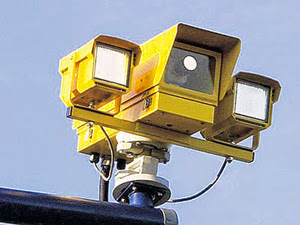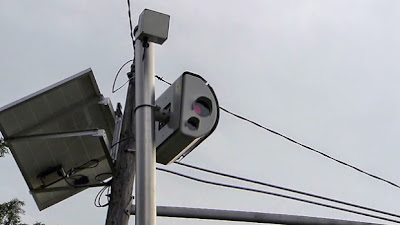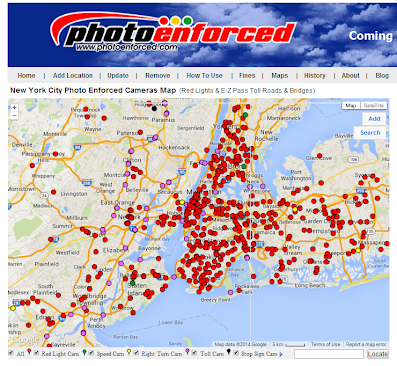More Than 2,000 Speed Cameras Are Now a Reality: What You Need to Know in 2025
Over a decade ago, the idea of deploying some 2,000 speed cameras in and around New York seemed ambitious. Today, that plan is not only realized — it has expanded and become central to New York City’s traffic safety strategy. What began as a 2014 proposal to deploy hundreds of new cameras across Long Island and the city now forms the backbone of Vision Zero and school zone enforcement efforts.
If you drive in New York today, here’s a clear, up-to-date guide to how these systems work, where they operate, and what’s new as of 2025. NY Speed Cameras map.
A Decade-Long Journey: From Proposal to City-Wide Enforcement
The 2014 Proposal
In 2014, the New York State Senate passed a bill permitting more than 2,000 new speed cameras in New York City and surrounding counties. That bill authorized:
-
Up to 69 cameras in Suffolk County
-
56 in Nassau County
-
An additional 120 cameras for New York City, atop the 20 already operational
These cameras were intended primarily for use before, during, and after school hours. Violators would be mailed $50 tickets for recorded speeding.
That marked the early push to expand automated speed enforcement beyond limited pilot zones into broader city and suburban coverage.
The Transition to 24/7 and Full Deployment
Over time, the program expanded in scope and authority:
-
In 2022, New York City began issuing speed camera violations 24/7, year-round, covering 750 school speed zones across all five boroughs.
-
As of 2025, NYC maintains approximately 2,200 active speed cameras covering these zones.
-
The cameras trigger fines for vehicles exceeding the posted speed by 10 mph or more (11+ mph over the limit).
The shift to 24/7 enforcement dramatically increased detection and fines — but more importantly, it solidified the role of speed cameras as a consistent deterrent, not just a daytime tool.
What’s New in 2025: Extensions, Expansions, and Enhancements
Program Reauthorization Through 2030
One of the biggest recent developments is legislative reauthorization:
-
In June 2025, the Governor signed legislation extending New York City’s school-zone speed camera program through July 1, 2030.
-
This law also strengthens enforcement rules, repeals outdated sections, and ensures continued deployment across the city.
Without this reauthorization, the program would have expired on July 1, 2025, causing the city’s 2,200+ cameras to go dark.
Work Zone & Highway Enforcement Expansion
In addition to school zones, New York has been piloting and expanding work-zone speed camera enforcement, particularly on state highways, bridges, and tunnels.
-
Proposed legislation aims to expand enforcement in work zones on the New York State Thruway and DOT-maintained highways and make the program permanent.
-
Officials are pushing to make these systems standard in MTA bridges and tunnels as part of the upcoming state budget.
-
The current Automated Work Zone Speed Enforcement systems operate where signage is posted, and cameras are activated after daily self-checks.
These expansions are especially aimed at protecting construction workers and managing speeds in high-risk highway settings.
Speed Limiter / “Super Speeder” Legislation
To address repeat offenders, lawmakers and city officials are pushing for intelligent speed assistance devices:
-
A proposed bill would require vehicles to install speed limiters if drivers rack up multiple violations (for example, 11 or more speed or camera tickets in 24 months).
-
The campaign is supported by evidence that a small group of drivers — sometimes called “super speeders” — are disproportionately involved in serious crashes.
-
However, the bill has been softened in negotiations, and red-light violations have been removed from some proposed thresholds.
Whether this legislation becomes law will influence how aggressive enforcement becomes in the coming years.
How the Cameras Work & What Happens if You’re Caught
Detection & Violation Process
-
Cameras operate 24/7, 365 days a year in school zones.
-
They photograph only vehicles going more than 10 mph above the limit (11+ mph).
-
The system filters out unclear captures, and DOT reviews to confirm that the vehicle is properly identified before issuing a Notice of Liability (NOL).
-
Once a violation is confirmed, the vehicle owner receives a Notice of Liability by mail in about 14 days.
-
The standard fine is $50 for an exceedance of 10+ mph.
If the violation is contested, you may dispute it online, by mail, or in person. Ignoring it can lead to late penalties, interest, or even vehicle booting or towing.
Results & Behavioral Change
-
Severe traffic injuries have dropped nearly 30% at locations with new cameras.
-
Some camera placements have produced dramatic changes — one Manhattan location saw a 75% reduction in speeding after installation.
-
Researchers have found that measurable behavioral shifts (reduced speeding) take about six months to fully materialize, and effects vary by neighborhood.
These patterns underline that sustained enforcement, not one-off deployments, yields long-term safety gains.
Challenges, Pushback & Loopholes
Tampering & Plate Evasion
To evade camera detection, some drivers have attempted tricks like:
-
Obscuring license plates with plastic covers, reflective spray, or bending them.
-
Covering cameras with objects such as fake flower bouquets.
-
Between 2020 and 2022, over 1.5 million tickets were never issued due to unreadable or obscured plates, representing tens of millions in lost fines.
New rules in 2025 make obscuring or altering plates illegal, with fines of $50, reinforcing that legible plates are essential for automated enforcement to work.
Political & Public Resistance
While many advocates hail the safety benefits, critics argue:
-
Speed cameras are a revenue trap rather than purely safety measures.
-
Some complain that frequent violations in residential areas amount to over-policing of driving behavior.
-
Legislative negotiations have diluted possible penalties, with some proposed “super speeder” thresholds scaled back.
Still, the fact that Albany renewed the program through 2030 suggests broad legislative support for continued automated enforcement.
Your Rights & Best Practices as a Motorist
If you drive in New York, here’s what you should keep in mind:
-
Know the Speed Zones
Cameras are limited to school speed zones, roughly within a ¼ mile of schools in each direction. -
Mind the “+10 Rule”
Cameras issue citations for 11 mph or more above the limit. Driving 10 mph over is below the threshold. -
Dispute If Incorrect
If you believe your Notice of Liability was in error, you have 30 days to respond, pay, or contest. -
Avoid Plate Tampering
Don’t obscure or alter your license plate. That itself may draw penalties and undermines your defense. -
Track Recurring Violations
If you incur multiple violations, you may become subject to increased scrutiny or future laws requiring speed-limiting technology.
Why This Matters: Safety, Accountability & Vision Zero
Speed is a leading factor in crash severity. Automated enforcement programs like New York’s are part of the broader Vision Zero initiative — aiming to eliminate traffic deaths altogether.
Legislation and deployment adjustments reflect a belief by policymakers that speed cameras are more than revenue tools — they are critical tools to compel safer driving behavior, especially in school zones and work zones where vulnerable pedestrians and workers are present.
The reauthorization through 2030 signals that the city intends to maintain consistency in enforcement for years to come.
Final Thoughts
What was once a speculative plan in 2014 has matured into a robust, city-wide network of speed cameras, now standard equipment in New York’s traffic safety arsenal. The 2,200+ cameras operating in 750 school zones reflect the program’s growth. Legislative reauthorizations, expansion into work zones, and future speed-limiter proposals show that the system continues evolving — both in breadth and in intensity.
For motorists, the implications are clear: staying within posted limits, keeping license plates visible, and understanding your rights if you receive a Notice of Liability are essential in a city where speed enforcement is no longer novel — it’s expected. Which states allow speed cameras?













